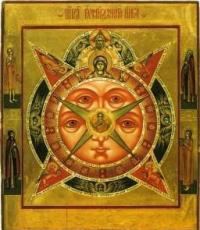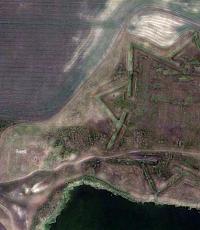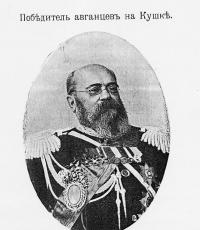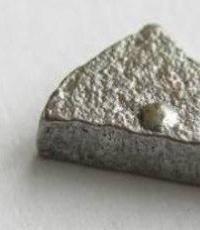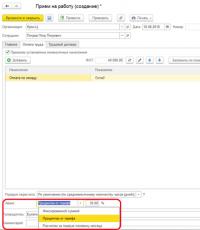Presentation on the topic of Rurik. Presentation on history on the topic "Rurik dynasty". primary school teacher
Who is he Rurik?..The most
mysterious
personality in
Russian
stories.
Pulls out
a bunch of
versions about him
origin.
And some
at all
deny it
existence.
Was it so
Rurik?
Rurik - grandson of Gostomysl?
One version says...1986. Umila
Novgorodskaya, mother
Rurik.
Background:
Novgorod Slavs andKrivichi were free and
lived according to the laws of the people
reign until 859. Then,
according to the chronicler Nestor,
brave and brave
conquerors called
our chronicles by the Varangians,
came from across the Baltic
seas and imposed tribute on
Slovenes Ilmensky,
Krivichi, Meryu and Chud. Through
for two years the Slavs drove them out,
but couldn't live in peace
together. The clan rebelled
family... The Slavs were tortured
civil strife. Then
they got together and Rurik
862-879
Genealogy of ancient princes
Oleg
879-912
Igor
912-945
Olga
945-964
Svyatoslav
964-972
Yaropolk
972-980
Svyatopolk
1015-1019
Oleg
Vladimir
980-1015
Yaroslav
Wise
1019-1054
Izyaslav
1054-1073 and 1073-1078
Boris
Svyatoslav
1073-1076
Gleb
Mstislav
Vsevolod
1078-1093Vladimir Monomakh
1113-1125
Svyatopolk
1093-1113
Yury Dolgoruky
1125-1157
Vsevolod the Big Nest
1176-1212
Andrey Bogolyubsky
1157-1174
Yuri
1218-1238
Yaroslav
1238-1246
Alexander Nevskiy
1252-1263
Yaroslav
1263-1271
Rurik, Sineus, Truvor. Painting by I. Glazunov
“Let’s look for a prince,who would own us and
judged rightly." Having decided
so, they went overseas to
Varangians of the Rus tribe and
told them: “The land is ours
large and abundant, and
there is no order in it - go
reign and rule over us."
Brothers Rurik, Sineus and
Truvor, agreed
take power over
people. That's how it happened
brothers first
rulers in our
ancient Fatherland. From
them and the country where they are
settled, received
name Rus.
The brothers settled like this: the eldest Rurik settled with
Ilmen Slavs; the second, Sineus, is between the miracle and
all over Beloozero; the third, Truvor, is among the Krivichi in
Izborsk. But regarding the city in which he sat down
reign of Rurik, chroniclers disagree: some
they say - in Novgorod, others - in Ladoga. He chose
Ladoga, because it is a convenient position
regarding the great waterway “from the Varangians to
Greeks" and the proximity of the sea. Two years after death
Sineus and Truvor's elder brother, joining them
lands to his principality, established in it
autocracy.
Rurik Varangian (?-879) Reign 862-879
The borders of the Principality of Rurik in the east reachedpresent Yaroslavl and Nizhny Novgorod regions, on
south of the Western Dvina. Two fellow tribesmen of Rurik, Varangians
Askold and Dir went with their comrades from Novgorod to
Constantinople in search of happiness. On the high bank
They saw Kyiv on the Dnieper and asked its inhabitants whose
this city. They were told that three brothers once lived here,
Kiy, Shchek, Khoryv and their sister Lybid. They built this
the city and named it in honor of his older brother Kiev. Brothers
and their sister died, and their descendants now pay tribute to the Khazars.
Askold and Dir summoned more Varangians, took possession of Kiev,
helped its inhabitants free themselves from tribute to the Khazars and
began to rule in it. Thus the Varangians founded two autocratic states
regions in Rus': Rurik in the north, Askold and Dirna
south. Having gathered a fairly large squad,
Askold and Dir decided to raid Byzantium. On
They sailed to Constantinople in 200 boats. In it
At that time, the Greek emperor and his army were in Asia.
The attack of the Varangians was unexpected. Horror
covered the population. According to the Byzantines,
The ferocious Varangians ravaged and destroyed everything with the sword. Neither
there was no mercy for the old or the small. By church
Prayers were held continuously. "The people are cruel and
impudent, - said the Greek patriarch in his sermon
Photius. The position of Constantinople was
critical. The Russians were about to break into
city. But the Greeks were saved by a miracle. Rurik reigned autocratically after his death
brothers in Novgorod for fifteen years and died in
879, handing over the reign and his young son
Igor to his relative, Oleg. When Rurik to
joined the Slavic people of Rus'
some Finnish tribes. Except them,
completely converted to Slavs, accepting them
customs, language and faith, Merya, all and Muroma. TO
Unfortunately, we know little about the affairs of the Rurik ruler, but the memory of him has been preserved in our
stories. He was the founder of the great
Rurikovich dynasty, with which sovereign Russia
gained dignity and authority.
Remember Rurik
Episode 1 RurikCar gallery
Motor ship Prince Rurik.
Open deck.
Cruiser 1st rank "Rurik" in
Suez Canal, 1895
"Rurik". (Created on
UAZ base)
ABOUT RURIK Rurik (862 - 879) - the first great Russian prince, one of the legendary figures in European history, the founder of the ancient Russian state. According to the chronicles, Rurik, summoned from the Varangians by the Slavs, Krivichi, Chud and the whole in 862, first occupied Ladoga, and then moved to Novgorod. He ruled in Novgorod under an agreement concluded with the local nobility, who asserted the right to collect revenue. Founder of the Rurik dynasty.
To use presentation previews, create a Google account and log in to it: https://accounts.google.com
Slide captions:
Prince Rurik (mysterious) History of Russia. 6, 10 grades Malashuk L yudmila Vladimirovna MBOU Secondary School No. 42, Vladimir 2015
Grandchildren of Gostomysl. Ilya Sergeevich Glazunov. 1986 Years of life of Prince Rurik: 817 - 879 Prince of Novgorod: 879 - 862
Prince Rurik 862 – 879 “There are 6370 per year (862 according to modern chronology). ...And they went overseas to the Varangians, to Rus'. Those Varangians were called Rus, just as others are called Swedes, and some Normans and Angles, and still others Gotlanders, so are these. The Chud, the Slovenians, the Krivichi and all said to the Russians: “Our land is great and abundant, but there is no decoration in it. Come reign and rule over us.” Nestor "The Tale of Bygone Years" 1113
Prince Rurik 862 – 879 Vasnetsov Viktor Mikhailovich. Calling of the Varangians. 1909
Prince Rurik 862 – 879 Calling of the Varangians. Fedor Antonovich Bruni. 1839
Prince Rurik 862 – 879 “... And they came and the eldest, Rurik, sat down in Novgorod, and the other, Sineus, on Beloozero, and the third, Truvor, in Izborsk. And from those Varangians the Russian land was nicknamed. Novgorodians are those people from the Varangian family, and before they were Slovenians. Two years later, Sineus and his brother Truvor died. And Rurik alone took all power, and began to distribute cities to his husbands - Polotsk to one, Rostov to another, Beloozero to another. The Varangians in these cities are the Nakhodniki, and the indigenous population in Novgorod is the Slovene, in Polotsk the Krivichi, in Rostov the Merya, in Beloozero the whole population, in Murom the Muroma, and Rurik ruled over them all.” Nestor “The Tale of Bygone Years” 1113. About the calling of Rurik by the Ilmen Slovenes, Krivichi, Chud and all in 862.
Prince Rurik 862 – 879 Rurik (Miniature from the “Royal Titular Book”. 17th century Coat of arms of Staraya Ladoga - a falcon falling down (coat of arms of Rurik)
Prince Rurik 862 – 879 Rurik on the Monument “Millennium of Russia” A monument erected in Veliky Novgorod in 1862 in honor of the thousandth anniversary of the legendary calling of the Varangians to Rus'. The authors of the monument project are sculptors Mikhail Mikeshin, Ivan Schroeder and architect Victor Hartman.
Prince Rurik 862 – 879 1 . In 862, he was called together with his brothers Sineus and Truvor to reign in the Novgorod land. 2. In 864, after the death of his brothers, he united the northern and northwestern lands under his rule. 3. In 864, he brutally dealt with the uprising of the Novgorodians under the leadership of Vadim the Brave.
Prince Rurik 862 – 879 4. In 866 – 870 inflicted a crushing defeat on the Kyiv prince Askold in the struggle for the lands of the Krivichi. 5. Planned campaigns against Kyiv, Khazaria, Constantinople.
Results of the activities of Prince Rurik 1. Initiated the formation of a hereditary monarchy in Rus'. 2. He is the founder of the Rurik dynasty, which ruled the Russian state until 1598. 3. The arrival of Rurik in the Novgorod lands accelerated the process of the formation of a single Old Russian state.
On the topic: methodological developments, presentations and notes
Presentation "From Rurik to Putin"
This presentation can be used in fragments in Russian history lessons in grades 6-9. The entire presentation can be used in extracurricular activities. In this work...
Scientific and practical conference on history. “The origin of the founder of statehood of Rus' Rurik”
Goal: meeting the special educational needs of students, developing research skills, working with sources. Formation of public speaking and discussion skills...
Slide 1
Slide 2

Slide 3
 Rurik RYURIK according to Russian chronicle legends, one of the king’s brothers, i.e. the leader of the Varangian squads, allegedly called “from across the sea” by the Novgorod Slavs in order to stop civil strife in Novgorod and founded the Old Russian state. According to this version, Rurik settled in Novgorod, and subsequently became the sovereign ruler of the Novgorod land.
Rurik RYURIK according to Russian chronicle legends, one of the king’s brothers, i.e. the leader of the Varangian squads, allegedly called “from across the sea” by the Novgorod Slavs in order to stop civil strife in Novgorod and founded the Old Russian state. According to this version, Rurik settled in Novgorod, and subsequently became the sovereign ruler of the Novgorod land.
Slide 4

Slide 5
 The transformation of Rurik from the leader of a mercenary squad into a Novgorod prince contributed to the cessation of strife and the strengthening of the role of Novgorod as the political center of the union of the northern group of Slavic tribes. Rurik first ruled in Ladoga. He was not called “from overseas,” but seized power in Novgorod in 862, taking advantage of internal strife. The legend about the creation of the Old Russian state by Rurik is refuted by numerous sources that speak of the formation of statehood among the Slavs long before the 9th century. and about the formation of the Old Russian state as a result of internal social development.
The transformation of Rurik from the leader of a mercenary squad into a Novgorod prince contributed to the cessation of strife and the strengthening of the role of Novgorod as the political center of the union of the northern group of Slavic tribes. Rurik first ruled in Ladoga. He was not called “from overseas,” but seized power in Novgorod in 862, taking advantage of internal strife. The legend about the creation of the Old Russian state by Rurik is refuted by numerous sources that speak of the formation of statehood among the Slavs long before the 9th century. and about the formation of the Old Russian state as a result of internal social development.
Slide 6

Slide 7
Slide 8

Slide 9
 Oleg built cities, determined the amount of taxes from the Slovenes, Krivichi and Meri, and ordered Novgorod to pay an annual tribute to the Varangians of 300 hryvnia to preserve peace. In 883 he “tortured” the Drevlyans, in 884 he defeated the northerners, in 885 he subjugated the Radimichi, imposing tribute on all these peoples. He tried to conquer the streets and Tiverts. The Joachim Chronicle reports that Oleg successfully fought with the Khazars, Bulgarians and other peoples living in the Danube region.
Oleg built cities, determined the amount of taxes from the Slovenes, Krivichi and Meri, and ordered Novgorod to pay an annual tribute to the Varangians of 300 hryvnia to preserve peace. In 883 he “tortured” the Drevlyans, in 884 he defeated the northerners, in 885 he subjugated the Radimichi, imposing tribute on all these peoples. He tried to conquer the streets and Tiverts. The Joachim Chronicle reports that Oleg successfully fought with the Khazars, Bulgarians and other peoples living in the Danube region.
Slide 10

Slide 11
 Igor Igor (912 - 945) - Grand Duke of Kiev. The Tale of Bygone Years calls him the son of Rurik. According to the chronicle, Prince Igor assumed power in 912 after the death of Oleg, already in adulthood. After Oleg's death, sensing a weaker hand, the Drevlyans tried to refuse to pay the established tribute, but Prince Igor pacified the rebellion and forced the Drevlyans to submit.
Igor Igor (912 - 945) - Grand Duke of Kiev. The Tale of Bygone Years calls him the son of Rurik. According to the chronicle, Prince Igor assumed power in 912 after the death of Oleg, already in adulthood. After Oleg's death, sensing a weaker hand, the Drevlyans tried to refuse to pay the established tribute, but Prince Igor pacified the rebellion and forced the Drevlyans to submit.
Slide 12

Slide 13
 During the reign of Igor, the process of forming the state had not yet been completed, in particular, the tax system had not developed, as evidenced by the chronicle legend. According to the Tale of Bygone Years, Prince Igor went with his retinue to Polyudye in the Drevlyan land. Considering the tribute insufficient, Prince Igor decided to collect it again. Outraged by such arbitrariness, the Drevlyans from Iskoresten killed Igor’s small detachment, and killed him himself. This happened in 945.
During the reign of Igor, the process of forming the state had not yet been completed, in particular, the tax system had not developed, as evidenced by the chronicle legend. According to the Tale of Bygone Years, Prince Igor went with his retinue to Polyudye in the Drevlyan land. Considering the tribute insufficient, Prince Igor decided to collect it again. Outraged by such arbitrariness, the Drevlyans from Iskoresten killed Igor’s small detachment, and killed him himself. This happened in 945.
Slide 14
 Campaigns against Byzantium Under 907, “The Tale of Bygone Years” tells about Oleg’s campaign against Byzantium, in which all the peoples under his control took part. Russian cavalry and a fleet numbering 2 thousand ships approached Constantinople. The Russians burned many houses and churches and killed many people on the outskirts of Constantinople. They tried to kill Oleg by bringing him poisoned food and wine from the city. But the Russian prince did not accept their “gifts”. The Byzantines had to pay Oleg a huge indemnity. Rus' concluded a very profitable peace treaty with Byzantium, which provided great benefits to Russian merchants. Leaving Constantinople, Oleg hung his shield on the city gates as a sign of victory. From his campaign he brought gold, silks, “fruits of the earth,” wine and “all sorts of ornaments” to Kyiv. Then he received the nickname Prophetic.
Campaigns against Byzantium Under 907, “The Tale of Bygone Years” tells about Oleg’s campaign against Byzantium, in which all the peoples under his control took part. Russian cavalry and a fleet numbering 2 thousand ships approached Constantinople. The Russians burned many houses and churches and killed many people on the outskirts of Constantinople. They tried to kill Oleg by bringing him poisoned food and wine from the city. But the Russian prince did not accept their “gifts”. The Byzantines had to pay Oleg a huge indemnity. Rus' concluded a very profitable peace treaty with Byzantium, which provided great benefits to Russian merchants. Leaving Constantinople, Oleg hung his shield on the city gates as a sign of victory. From his campaign he brought gold, silks, “fruits of the earth,” wine and “all sorts of ornaments” to Kyiv. Then he received the nickname Prophetic.
Slide 15

Slide 16
 Igor also undertook campaigns against Constantinople, the first of which ended very sadly for the Russian army, most of the prince’s army was destroyed. Prince Igor organized a second campaign. In 944, the united army of Russians, Varangians and Pechenegs went south. Warned by the Bulgarians and Khazars “about Rus' without number,” the Byzantines offered peace on terms favorable to the Russians. After consulting with wise warriors, Prince Igor accepted the emperor’s offer. The next year, Kyiv and Constantinople exchanged embassies and concluded a new peace treaty in 944.
Igor also undertook campaigns against Constantinople, the first of which ended very sadly for the Russian army, most of the prince’s army was destroyed. Prince Igor organized a second campaign. In 944, the united army of Russians, Varangians and Pechenegs went south. Warned by the Bulgarians and Khazars “about Rus' without number,” the Byzantines offered peace on terms favorable to the Russians. After consulting with wise warriors, Prince Igor accepted the emperor’s offer. The next year, Kyiv and Constantinople exchanged embassies and concluded a new peace treaty in 944.
Slide 17

Slide 18
 Olga’s economic and foreign policy activities. Olga (945 - ca. 965) - Grand Duchess, widow of Prince Igor. Princess Olga is one of the most interesting persons of ancient Russian history. The uniqueness of her position lies in the fact that of all the rulers of the “Rurikovich empire” she is the only woman. Its origin is unknown. She was probably “from the family of neither a prince nor a nobleman, but from ordinary people.”
Olga’s economic and foreign policy activities. Olga (945 - ca. 965) - Grand Duchess, widow of Prince Igor. Princess Olga is one of the most interesting persons of ancient Russian history. The uniqueness of her position lies in the fact that of all the rulers of the “Rurikovich empire” she is the only woman. Its origin is unknown. She was probably “from the family of neither a prince nor a nobleman, but from ordinary people.”
Slide 19

Slide 20
 After the death of Igor in 945, Igor’s son, Svyatoslav, was still a child at that time, and thus, Princess Olga became the de facto ruler of the entire Russian land. Following the tradition of blood feud, she brutally took revenge on the Drevlyans for the death of her husband. The Tale of Bygone Years gives a description of the princess's state activities. Unlike Igor, who collected tribute arbitrarily, in fact, Olga carried out the first tax reform in the history of the Old Russian state. In 946, she introduced a fixed amount of tribute - lessons, the order of its collection and their systematicity, which contributed to the strengthening of princely power in the territories under her control. The chronicle mentions Olga's organization of camps and villages, which later became the administrative centers of the state.
After the death of Igor in 945, Igor’s son, Svyatoslav, was still a child at that time, and thus, Princess Olga became the de facto ruler of the entire Russian land. Following the tradition of blood feud, she brutally took revenge on the Drevlyans for the death of her husband. The Tale of Bygone Years gives a description of the princess's state activities. Unlike Igor, who collected tribute arbitrarily, in fact, Olga carried out the first tax reform in the history of the Old Russian state. In 946, she introduced a fixed amount of tribute - lessons, the order of its collection and their systematicity, which contributed to the strengthening of princely power in the territories under her control. The chronicle mentions Olga's organization of camps and villages, which later became the administrative centers of the state.
Slide 21
 The economic strengthening that followed the administrative reforms of Princess Olga contributed to the increase in the political weight of Kievan Rus in international relations. Olga decided to consolidate this new position of her state by joining the Christian faith. Moreover, the princess sought to receive baptism from the hands of the Byzantine patriarch and precisely in the capital of the empire - Constantinople, since this increased prestige within Rus' and beyond its borders. According to the chronicle, Olga was the first princess to convert to Christianity. Apparently this happened in 955 in Constantinople. She returned to Kyiv with a priest, which contributed to the further spread of the Christian religion in the Russian lands and created the preconditions for the adoption of Christianity in the eastern version. In an era when war was the main means of resolving political disputes, Olga sought international recognition without the use of force. During her reign, Rus' did not fight with any of the neighboring states.
The economic strengthening that followed the administrative reforms of Princess Olga contributed to the increase in the political weight of Kievan Rus in international relations. Olga decided to consolidate this new position of her state by joining the Christian faith. Moreover, the princess sought to receive baptism from the hands of the Byzantine patriarch and precisely in the capital of the empire - Constantinople, since this increased prestige within Rus' and beyond its borders. According to the chronicle, Olga was the first princess to convert to Christianity. Apparently this happened in 955 in Constantinople. She returned to Kyiv with a priest, which contributed to the further spread of the Christian religion in the Russian lands and created the preconditions for the adoption of Christianity in the eastern version. In an era when war was the main means of resolving political disputes, Olga sought international recognition without the use of force. During her reign, Rus' did not fight with any of the neighboring states.
Slide 22

Slide 23
 Trip to Constantinople Let us turn to the documents at our disposal. It is reliably known that the Kiev princess traveled to Constantinople during the time of Emperor Constantine Porphyrogenitus, and during the period of his sole rule, that is, after the removal of Roman Lekapin and his sons from power (945-959). Constantine left a detailed description of Olga's reception at the Byzantine court. Olga was a pagan, but the name of God Almighty was already famous in Kyiv. She wanted to become a Christian and she herself went to the capital of the empire and the Greek Faith. There the patriarch was her mentor and baptizer, and Constantine Porphyrogenitus was the receiver from the font. Instructed in the holy rules of Christianity by the Patriarch himself, Olga returned to Kyiv. The emperor, according to the chronicler, sent her away with rich gifts and the name of his daughter, but it seems that she was generally dissatisfied with his reception. The princess, inflamed with zeal for her new Faith, hastened to reveal to her son the errors of paganism, but the young, proud Svyatoslav did not want to heed her instructions.
Trip to Constantinople Let us turn to the documents at our disposal. It is reliably known that the Kiev princess traveled to Constantinople during the time of Emperor Constantine Porphyrogenitus, and during the period of his sole rule, that is, after the removal of Roman Lekapin and his sons from power (945-959). Constantine left a detailed description of Olga's reception at the Byzantine court. Olga was a pagan, but the name of God Almighty was already famous in Kyiv. She wanted to become a Christian and she herself went to the capital of the empire and the Greek Faith. There the patriarch was her mentor and baptizer, and Constantine Porphyrogenitus was the receiver from the font. Instructed in the holy rules of Christianity by the Patriarch himself, Olga returned to Kyiv. The emperor, according to the chronicler, sent her away with rich gifts and the name of his daughter, but it seems that she was generally dissatisfied with his reception. The princess, inflamed with zeal for her new Faith, hastened to reveal to her son the errors of paganism, but the young, proud Svyatoslav did not want to heed her instructions.
Slide 24
 Holy Equal-to-the-Apostles Grand Duchess Olga enters the Church of Hagia Sophia. Constantinople
Holy Equal-to-the-Apostles Grand Duchess Olga enters the Church of Hagia Sophia. Constantinople
“Political fragmentation of Rus'” - Location: from the Gulf of Finland to the Urals, from the Arctic Ocean to the upper reaches of the Volga. In what year did the congress of princes take place in Lyubech? Check yourself! Location: lands in the northeast of the Dnieper region. The decision of Yaroslav Vladimirovich. Congress of princes in Lyubech in 1097. Location: at the foothills of the Carpathians.
“Russian lands in XII-XIII” - Our Lady of Vladimir. Dmitrievsky Cathedral. A chronicle is a historical work in which events were described year by year. Assumption Cathedral in Vladimir. What is culture? Features of the chronicle. The main question of the lesson: Find out: What knowledge did Russian people have in the 12th-13th centuries? Church of the Savior on Nereditsa.
“Russian principalities in XII-XIII” - St. Demetrius Cathedral in Vladimir. 1. Features of culture of the 12th – 13th centuries. Iconography of Vladimir-Suzdal land. Savior Not Made by Hands. Assumption Cathedral in Vladimir. Annunciation Ustyug. Culture of Russian lands in the XII–XIII centuries. Novgorod icon painting: bright colors predominate - red, blue, green.
“Political fragmentation in Rus'” - Posadnik - the head of Novgorod, who was in charge of administration and court, and controlled the activities of the prince. At the meeting, the mayor, thousand, and archbishop were elected. Terms and concepts of lessons. 1. Compare the geographical location and nature of the largest lands during the period of political fragmentation. The meeting was public. Centripetal forces remained, which constantly opposed centrifugal forces.
“Yuri Dolgoruky Vladimirovich” - Son of Vladimir Monomakh. Yuri Vladimirovich Dolgoruky (1090 - 1157). From 1117 he began to reign individually. Born in 1090. While still a child, he was sent with his brother Mstislav to reign in Rostov. Monument to Yuri Dolgoruky. He was not loved by either the people or the princes; rather, on the contrary, he gained a reputation as a skilled warrior and an equally skilled ruler.
“Novgorod land” - Birch bark document. Metal Wine Cloth Luxury items. Outpost - forward post. The main types of crafts of Novgorod residents. First mention. Question: What were the features of Novgorod trade? Crafts Trade Crafts. Analysis of artistic and documentary sources. Question: Text 1. Task 1.
There are a total of 40 presentations in the topic
